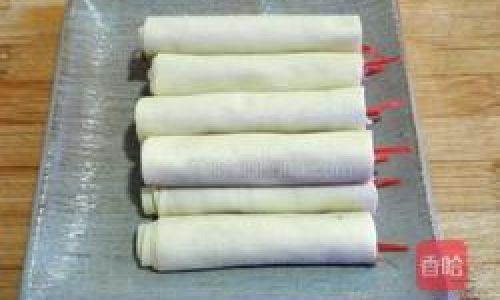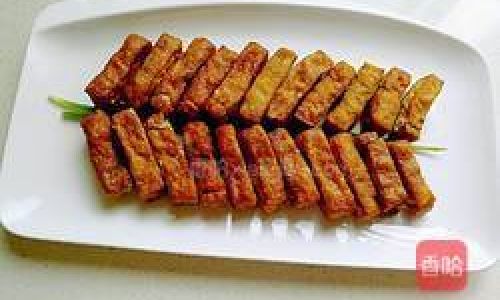Table of content
- A. Preparation and Planning
- B. Personal Protective Gear
- C. Ignition Protocols
- D. Emergency Preparedness
- A. Traditional Firecrackers
- B. Aerial Displays
- C. Eco-Friendly Alternatives
- A. Event Planning
- B. Venue Preparation
- C. Legal Compliance
- D. Timeline Execution
- A. Synchronized Light Shows
- B. Themed Events
- C. Community Engagement
- D. Technological Integrations
- A. Asia
- B. Europe
- C. Americas
- A. Challenges
- B. Solutions
- C. Community Initiatives
Introduction
The arrival of spring has long been a cause for celebration across cultures, symbolizing renewal, growth, and the triumph of light over darkness. Among the most vibrant traditions associated with this season is the use of firecrackers—a practice rooted in history yet adapted to modern times. This article explores the art of “爆竹迎春” (Bao Zhu Ying Chun), or “welcoming spring with firecrackers,” offering insights into its cultural significance, safety protocols, creative applications, and environmental considerations. From ancient rituals to contemporary festivals, firecrackers remain a dynamic symbol of joy and collective hope. Understanding how to honor this tradition responsibly ensures its preservation for generations to come.
I. Historical and Cultural Significance
The tradition of using firecrackers to mark seasonal transitions dates back thousands of years, with origins traced to ancient China. During the Han Dynasty (206 BCE–220 CE), firecrackers—initially made from bamboo stalks thrown into fires—were believed to scare away evil spirits and bad luck. The explosive pops, caused by the bamboo’s air pockets rupturing under heat, became integral to Lunar New Year celebrations, a festival coinciding with the first days of spring.
Legend has it that the practice evolved after the discovery of gunpowder during the Tang Dynasty (618–907 CE). Alchemists accidentally created gunpowder while seeking elixirs of immortality, leading to the invention of explosives. By the Song Dynasty (960–1279 CE), firecrackers were being mass-produced, with paper tubes replacing bamboo. Their use spread beyond China, influencing festivals in Southeast Asia, Europe, and the Americas.
Culturally, firecrackers serve multiple purposes:
- Warding Off Evil: The loud noises and bright flashes are thought to dispel malevolent forces.
- Inviting Prosperity: The red hue of many firecrackers symbolizes good fortune.
- Community Bonding: Festivals often involve collective displays, fostering unity.
Today, while modern celebrations may incorporate lasers or digital effects, the essence of firecrackers as symbols of renewal persists.

II. Safety First: Essential Guidelines for Firecracker Use
Firecrackers, while exhilarating, demand strict safety measures to prevent accidents. Each year, thousands of injuries occur due to mishandling, emphasizing the need for caution.
A. Preparation and Planning
- Legal Compliance: Research local laws regarding firecracker use. Many regions ban them due to fire risks or noise ordinances.
- Venue Selection: Choose open spaces away from flammable materials, buildings, and wildlife. Avoid dry grass or forested areas.
- Equipment Check: Ensure firecrackers are intact, with no frayed fuses or damaged casings. Store them in cool, dry containers.
B. Personal Protective Gear
- Eye Protection: Safety goggles shield against debris.
- Gloves: Non-flammable gloves prevent burns during handling.
- Ear Protection: Loud explosions can damage hearing; earplugs are advisable for bystanders.
C. Ignition Protocols
- Designate a Launcher: Assign one person to light firecrackers, avoiding crowds.
- Use Long Fuses: Extend fuses with non-flammable materials if necessary to maintain distance.
- Backward Retreat: Light the fuse and move away swiftly, avoiding sudden movements that could ignite nearby objects.
D. Emergency Preparedness
- Fire Extinguishers: Keep buckets of water, sand, or a fire extinguisher nearby.
- First Aid Kit: Include burn ointments, bandages, and antiseptic wipes.
- Emergency Contacts: Have local emergency numbers on hand.
III. Types of Firecrackers and Their Uses
Modern firecrackers come in varied forms, each suited to different occasions and effects. Understanding their distinctions ensures safe and impactful celebrations.
A. Traditional Firecrackers
- String Firecrackers: Linked in long chains, these create sustained bursts of noise. Ideal for parades or rituals.
- Cherry Bombs: Small, spherical explosives with loud reports. Restricted in many areas due to their power.
- Sparklers: Handheld wands emitting golden sparks. Popular for children’s use under supervision.
B. Aerial Displays
- Rockets: Launched into the air, exploding in colorful patterns. Require vertical launchers and clear skies.
- Cakes: Multi-shot devices firing sequential bursts. Suitable for grand finales.
- Fountains: Ground-based effects spraying sparks up to 15 feet. Safe for enclosed spaces.
C. Eco-Friendly Alternatives
Growing environmental awareness has spurred innovations:

- Cold Pyrotechnics: Produce light and color without heat, reducing fire risks.
- Biodegradable Casings: Made from paper or compressed starch instead of plastic.
- Low-Noise Options: Minimize sound pollution for residential areas.
IV. Step-by-Step Guide to Organizing a Firecracker Celebration
Hosting a firecracker event requires meticulous planning. Follow this guide to ensure a memorable and safe occasion.
A. Event Planning
- Objective Setting: Define the event’s purpose (e.g., cultural festival, community gathering).
- Budget Allocation: Allocate funds for firecrackers, safety equipment, and permits.
- Team Assembly: Recruit volunteers for setup, crowd control, and emergency response.
B. Venue Preparation
- Site Inspection: Clear debris, mark spectator zones, and install barriers.
- Wind Assessment: Avoid launching firecrackers on windy days to prevent misdirection.
- Exit Routes: Ensure multiple escape paths for emergencies.
C. Legal Compliance
- Permits: Apply for fireworks licenses and insurance coverage.
- Notifications: Inform neighbors and local authorities about the event.
D. Timeline Execution
- Setup Phase (3–4 Hours Pre-Event): Arrange firecrackers, test ignition systems, and conduct safety briefings.
- Pre-Show (30 Minutes): Warm-up with sparklers or small fountains.
- Main Display (15–30 Minutes): Coordinate aerial bursts and ground effects.
- Post-Show (1 Hour): Inspect the site for residual hazards and dispose of debris.
V. Creative Ways to Incorporate Firecrackers into Modern Celebrations
While tradition remains paramount, contemporary events blend firecrackers with innovation.
A. Synchronized Light Shows
Pair firecrackers with music and lasers for immersive experiences. Programming software allows precise timing, creating thematic narratives (e.g., a “spring awakening” sequence with blooming flower patterns).

B. Themed Events
- Cultural Festivals: Reenact historical legends, such as the myth of Nian (a monster deterred by loud noises).
- Art Installations: Use slow-burning firecrackers to reveal sculptures or messages.
C. Community Engagement
- Workshops: Teach participants to make eco-friendly sparklers using natural dyes.
- Photography Contests: Encourage capturing the beauty of firecracker displays.
D. Technological Integrations
- Drone Light Shows: Replace traditional fireworks with LED-equipped drones forming 3D shapes.
- Virtual Reality: Allow remote viewers to experience displays via VR headsets.
VI. Cultural Variations Around the World
Firecracker traditions vary globally, reflecting local customs and beliefs.
A. Asia
- China: Lunar New Year celebrations feature dragon dances accompanied by firecracker volleys.
- India: Diwali festivals use firecrackers to honor the goddess Lakshmi, though environmental concerns are prompting shifts toward laser shows.
B. Europe
- Spain: Las Fallas Festival in Valencia includes massive firework displays ending with the burning of effigies.
- UK: Guy Fawkes Night (November 5) commemorates a foiled plot with bonfires and fireworks.
C. Americas
- Mexico: Independence Day (September 16) features castillos—wooden towers erupting in fireworks.
- USA: Fourth of July celebrations often integrate firecrackers into patriotic displays.
VII. The Environmental Impact and Sustainable Practices
The ecological footprint of firecrackers—air pollution, noise pollution, and debris—necessitates greener alternatives.
A. Challenges
- Air Quality: Firecrackers release particulate matter, exacerbating respiratory issues.
- Wildlife Disturbance: Loud noises disorient animals and disrupt ecosystems.
- Waste: Non-biodegradable casings litter landscapes.
B. Solutions
- Regulation: Implement emission caps and ban high-pollutant firecrackers.
- Innovation: Invest in nitrogen-based fuels that reduce smoke.
- Education: Campaigns promoting responsible disposal and eco-friendly choices.
C. Community Initiatives
- Cleanup Drives: Organize post-event trash collection.
- Fundraisers: Allocate a portion of event proceeds to reforestation efforts.
VIII. Conclusion: Balancing Tradition and Progress
Firecrackers embody the human spirit’s capacity for joy and renewal. As societies evolve, so too must traditions—embracing safety, creativity, and sustainability. Whether through low-noise alternatives or synchronized drone displays, the essence of “爆竹迎春” endures: a collective celebration of life’s cyclical beauty. By honoring the past while innovating for the future, we ensure that the crackle of firecrackers continues to herald springs for centuries to come.

Final Thoughts
Organizing a firecracker celebration is both an art and a science. It demands respect for tradition, adherence to safety, and creativity in adaptation. As stewards of cultural heritage, we must strive to make these festivities inclusive, eco-conscious, and memorable for all. Let the explosions of color and sound remind us of spring’s promise—a season of rebirth and shared hope.





0 comments